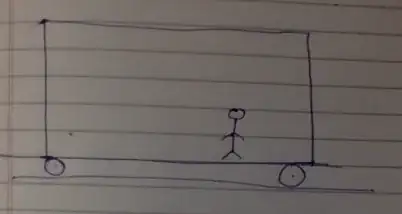Case 1:
You can understand the fist point by thinking that you can not pull yourself up by your bootstraps. Maybe a better way to picture this point is to think at the result if you put your feet of the wall and your hand on the floor. This way you can understand that while you were pushing your hand against the wall your feet where pushing the floor in the opposite direction. Can you imagine any reason why there should be any difference between the two pushes? In that case, do you think that pushing your hand on the floor and your feet on the wall can change to motion?
The reason is obviously no, but I hope that this may help you to understand the third law.
Case 2 and 3:
An easy way to understand what happends in this case is to understand that the centre of mass of any system will not move unless there are some external forces action on it. Then, no matter how the man/woman/cat/hat/you/light/particle/energy is going to move, no matter if it moves using fancy gadgets of mysterious forces, as long as everything happens inside the box, the centre of mass of the box will not move.
Then let's try to explore this concept for your cases. Using our statement the only thing that you have to care is where is the man at the beginning and where he's at the end. Then in your last problem you can see that the box will be at rest, the only difference will be a shift in position in order to keep the centre of mass in the same position.
In the case where he's moving, at each moment the box will shift, keeping the centre of mass in the same position, he will eventually reach one of the wall and basically end like the third case.
Extra:
What if the man start to run back and forth in a dumbbell shaped box?


